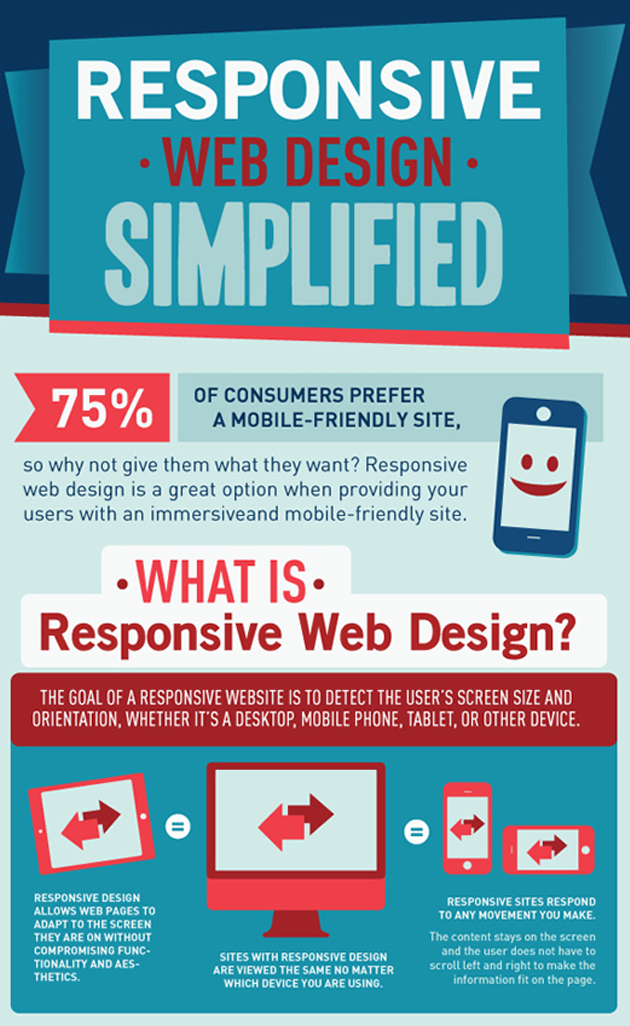The Advancement Of Site Design: From Past To Present
The Advancement Of Site Design: From Past To Present
Blog Article
Content Create By-Johnsen Trolle
In the past, sites were easy and focused on details. Navigating was direct, and design was for desktop computers. Now, customer experience is essential. Data overviews layouts for simple navigating. Receptive layouts suit various gadgets. Today, dark setting minimizes pressure, and minimal food selections improve navigation. Interactive attributes involve customers, and strong visuals attract attention. AI assimilation boosts engagement. See how layout has actually developed to improve your on-line trip.
Very Early Days of Website Design
In the early days of website design, simplicity preponderated. Sites were standard, with limited shades, font styles, and layouts. The focus was on supplying details rather than fancy visuals. Individuals accessed the web through slow-moving dial-up links, so rate and capability were crucial.
Navigating food selections were straightforward, generally located at the top or side of the web page. Web sites were made for computer, as mobile surfing wasn't yet widespread. Web content was king, and designers focused on very easy readability over intricate layout aspects.
HTML was the key coding language utilized, and developers had to work within its restraints. Animations and interactive functions were very little contrasted to today's criteria. Websites were fixed, with little dynamic material or tailored customer experiences.
Rise of User-Focused Style
With the evolution of web site style, a change in the direction of user-focused design principles has come to be significantly famous. Today, developing websites that focus on user experience is essential for engaging visitors and achieving service goals. User-focused style entails understanding the needs, choices, and habits of your target audience to customize the internet site's design, material, and includes as necessary.
Developers now perform extensive study, such as customer surveys and usability testing, to gather insights and responses straight from customers. This data-driven technique aids in developing instinctive navigating, clear calls-to-action, and visually appealing user interfaces that reverberate with visitors. By putting the user at the center of the layout process, websites can provide a more personalized and satisfying experience.
Responsive design has also emerged as an essential aspect of user-focused style, making certain that websites are enhanced for various tools and display dimensions. This flexibility boosts ease of access and functionality, dealing with the diverse means users connect with web sites today. Basically, the surge of user-focused style signifies a change towards developing digital experiences that prioritize the demands and assumptions of the end user.
Modern Trends in Website Design
Explore the most recent fads forming website design today. One noticeable trend is dark setting design, supplying a smooth and modern appearance while reducing eye strain in low-light environments. An additional essential fad is minimalist navigation, simplifying food selections and improving customer experience by focusing on essential elements. Incorporating micro-interactions, such as computer animated switches or scrolling results, can produce an extra appealing and interactive site. Responsive style continues to be critical, making sure seamless user experiences throughout various gadgets. Additionally, making use of bold typography and asymmetrical layouts can include aesthetic interest and accentuate particular web content.
Integrating AI technology, like chatbots for consumer assistance or personalized suggestions, enhances customer involvement and simplifies procedures. Ease of access has likewise become a significant trend, with designers focusing on comprehensive design practices to satisfy diverse customer needs. Welcoming sustainability by maximizing site performance for rate and efficiency is one more arising trend in website design. Teaming up with user responses and data analytics to iterate and improve style constantly is crucial for staying relevant in the ever-evolving digital landscape. By accepting these modern-day fads, you can create a visually attractive, user-friendly site that resonates with your target market.
why not try here
As you reflect on the development of site style from the early days to now, you can see how user-focused layout has actually become the driving force behind contemporary patterns.
Welcome the trip of adjustment and adjustment in web design, always maintaining the customer experience at the center.
Tippingpointdigital
Keep existing with the current trends and modern technologies, and never quit evolving your method to develop visually spectacular and straightforward sites.
Evolve, adapt, and create - the future of website design remains in your hands.
